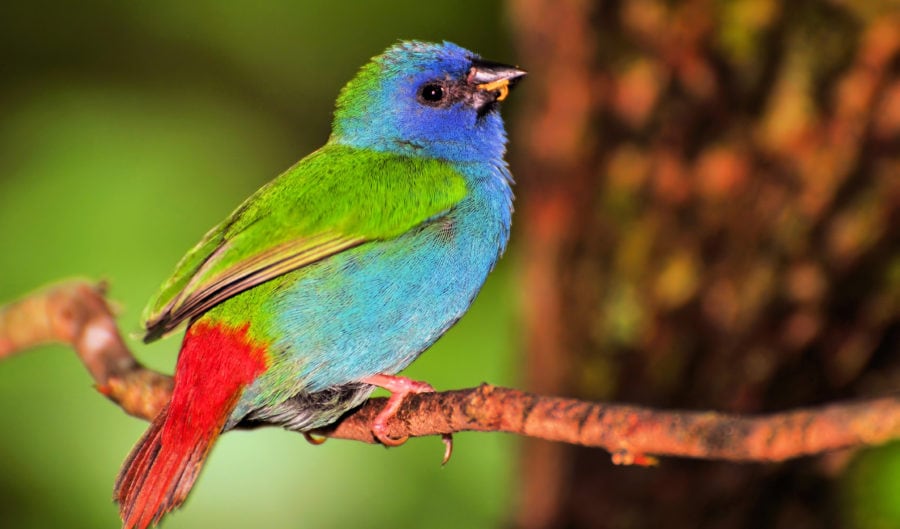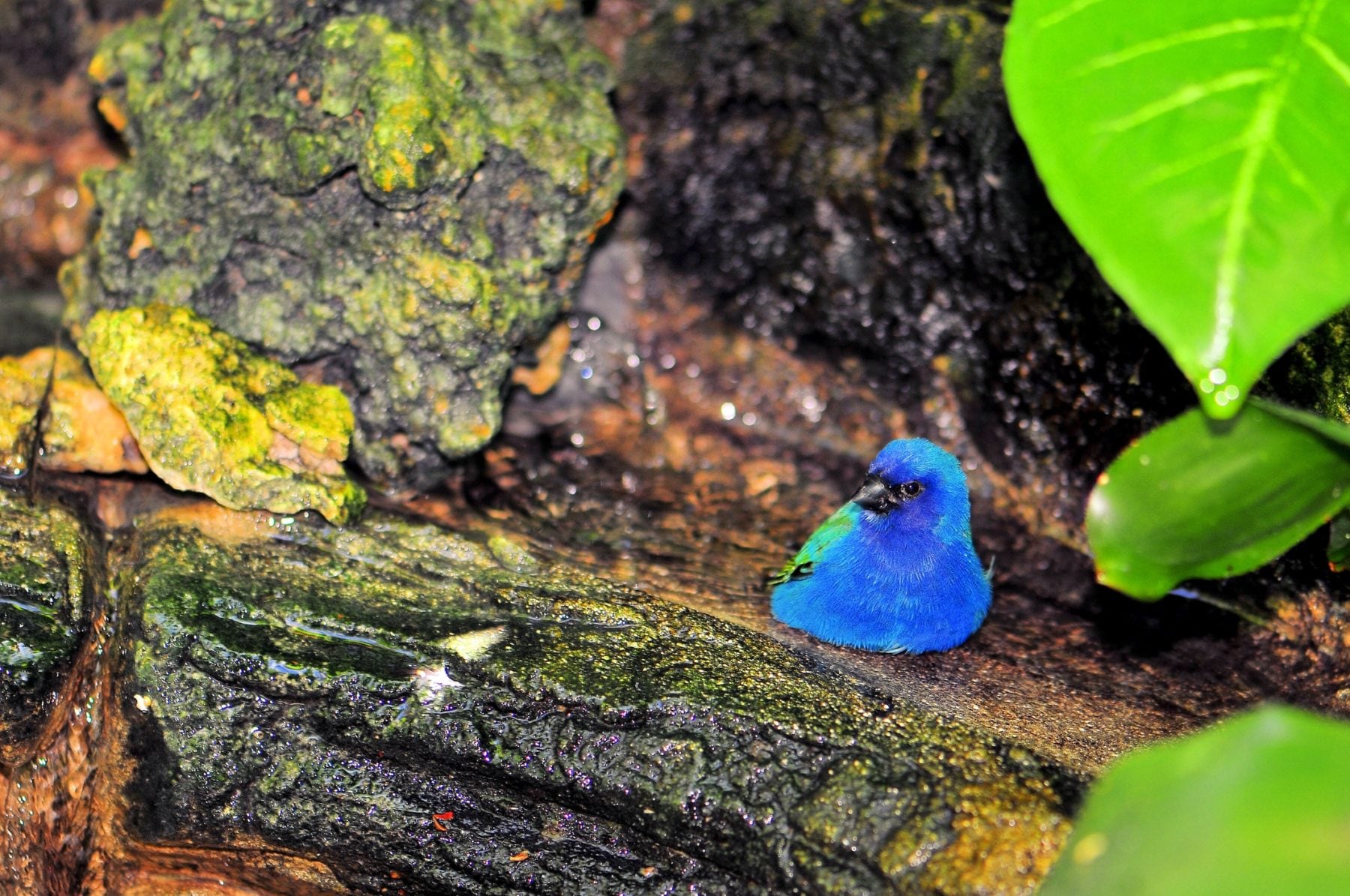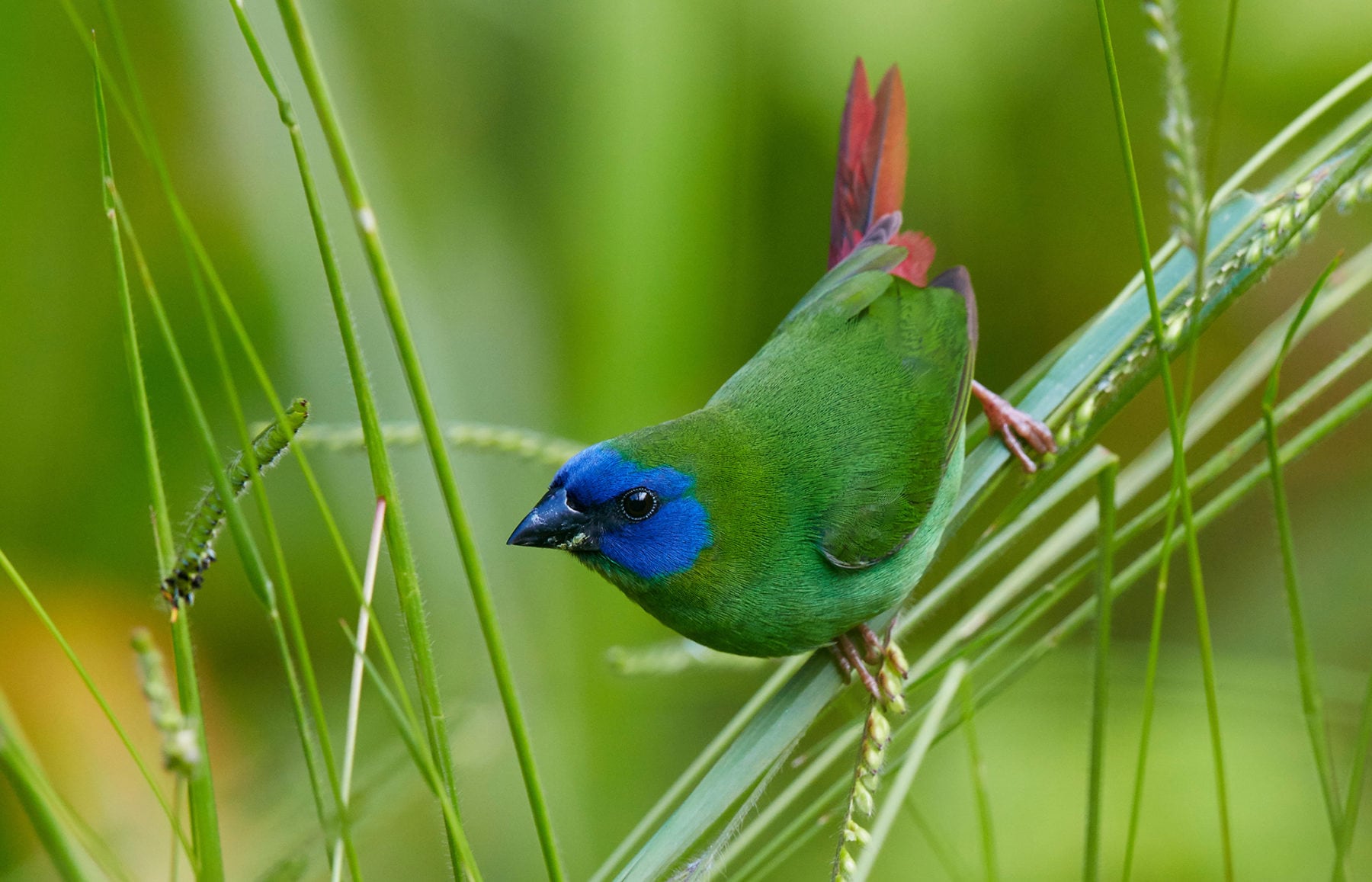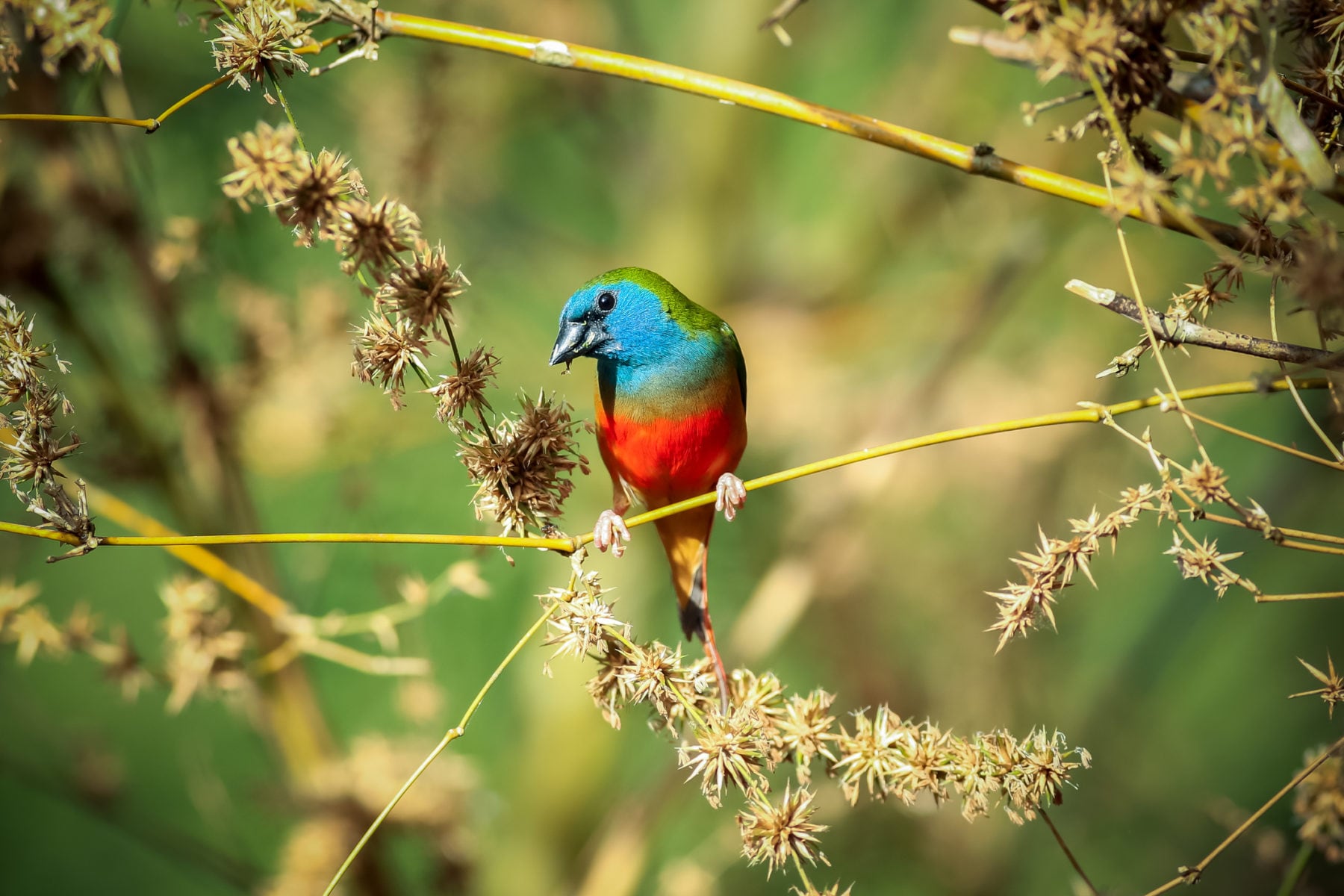The tricoloured parrot finch is a jewel-toned beauty

Bec Crew
Bec Crew

DRESSED IN royal blue with emerald wings and a flash of red on the tail, the tricoloured parrot finch more than lives up to its name.
Found just north of Australia in the forests and grasslands of Timor and the Tanimbar Islands – cluster of small islands in the Maluku province of Indonesia – these birds are rarely spotted in the wild, and are highly sought-after by breeders.
At just 10 cm in length, including the tail, tricoloured parrotfinches (Erythrura tricolor) are one of the smallest members of the estrildid finch family, which includes other wonderfully decorated species such as the red strawberry finch and silver diamond firetail.
Also known as the Forbes parrotfinch, tricoloured parrotfinches are shy, skittish things, but are reportedly quite sweet and friendly with caretakers in aviaries and zoos, if their trust is earned.
Seemingly the one place these birds aren’t bashful is in the water. They absolutely love a bath, and don’t seem to mind when photographers get up close and snap them when they do it.
Just look at this squat little waterbaby having the absolute best time:

The tricoloured parrotfinch is very closely related to another jewel-toned beauty, the blue-faced parrotfinch (Erythrura trichroa), which is found in north-eastern Australia, throughout Southeast Asia, and Japan.
There’s a particular subspecies (Erythrura trichroa macgillivrayi), found near the rural town of Yungaburra in Tablelands Region of Queensland, which is extremely rare, and scientists know almost nothing about its movements or behaviour.
Here you can see that the blue-faced parrotfinch got all the same colours as the tricoloured parrot finch, but it opted for more camouflage, and slightly less opulence:

Then there’s the pin-tailed parrotfinch (Erythrura prasina), another Southeast Asian species, which has yet another take on the green, red, and blue colourway:

We’ll leave you with this very peaceful footage of some males and females having a meal:

